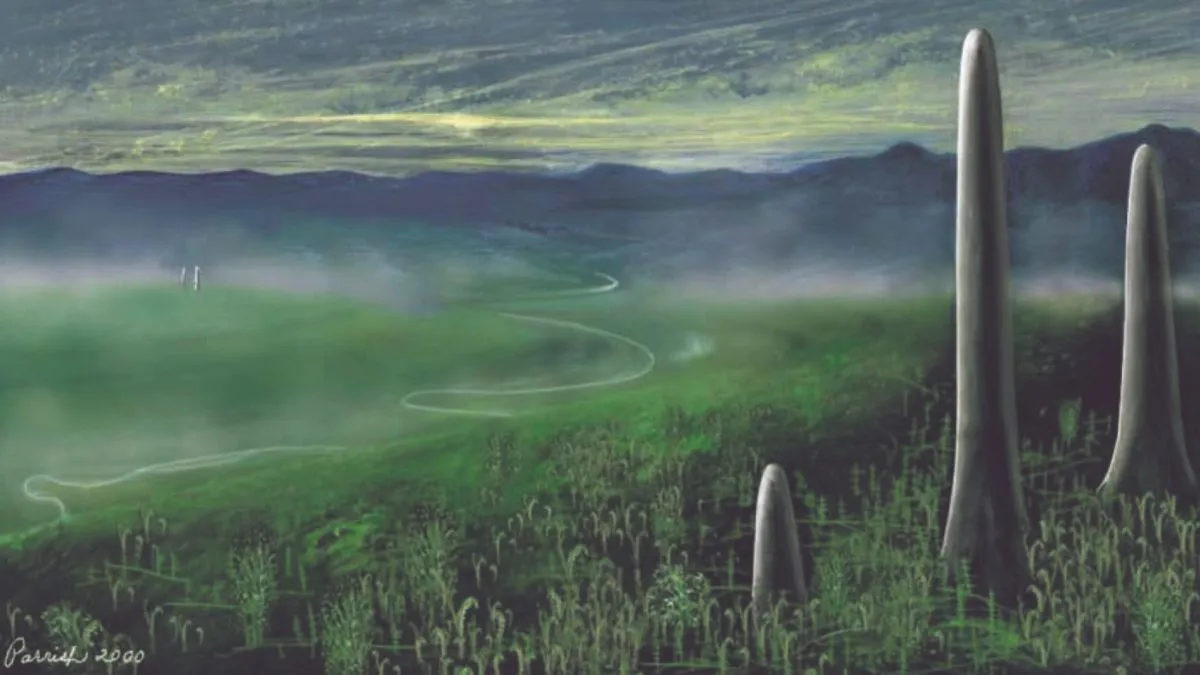
A recent study has shed light on Prototaxites, a peculiar ancient life-form that may represent the first giant organism to inhabit land. This organism, which thrived during the Devonian period approximately 420 million to 375 million years ago, has long perplexed scientists regarding its classification. Resembling massive, branchless cylindrical tree trunks, some species of Prototaxites reached impressive heights of up to 26 feet (8 meters) and widths of 3 feet (1 meter).
Since the discovery of the first Prototaxites fossil in 1843, researchers have debated whether these organisms were plants, fungi, or even a type of algae. Initial chemical analyses conducted in 2007 suggested a fungal identity, but new findings published on March 17 on the preprint server bioRxiv challenge this assumption. The latest research proposes that Prototaxites may not be a colossal fungus but could belong to an entirely distinct and previously unidentified branch of the tree of life.
All life on Earth is categorized into three domains: bacteria, archaea, and eukarya, with eukarya encompassing all multicellular organisms, including the four kingdoms of fungi, animals, plants, and protists. While bacteria and archaea consist solely of single-celled organisms, this new research suggests that Prototaxites might not fit neatly into any of these established categories.
The researchers focused on a specific species known as Prototaxites taiti, discovered in the Rhynie chert—a sedimentary deposit famed for its well-preserved fossils of early land plants and animals, located in Scotland. Although this species was smaller than other Prototaxites, reaching only a few inches in height, it remains the largest specimen found in this region, revealing significant insights into its anatomy.
An examination of the internal structure of the fossilized Prototaxites revealed a network of tubes reminiscent of fungal structures. However, the branching and reconnection of these tubes differed significantly from modern fungi. The research team concluded that Prototaxites taiti was the most substantial organism in the Rhynie ecosystem, with anatomy distinct from known fungi, leading them to propose that it belongs to an entirely extinct lineage.
In addition to its unique structural features, the team discovered that Prototaxites left entirely different chemical signatures compared to contemporary fungi preserved in the Rhynie chert. Notably, Prototaxites fossils did not contain chitin, a key component of fungal cell walls, but instead exhibited chemical markers similar to lignin, which is commonly found in the wood and bark of plants. This further supports the idea that Prototaxites represents a previously undescribed group of eukaryotes.
Kevin Boyce, a professor at Stanford University and a key figure in the 2007 study that characterized Prototaxites as a giant fungus, expressed agreement with the new findings. He emphasized that the current phylogenetic data fails to place Prototaxites within the fungal lineage, suggesting it could indeed be something entirely unique. Boyce remarked, "Regardless of whether it is a fungus or another organism, Prototaxites showcases an extraordinary evolutionary experiment in complex multicellularity that is now extinct."
As the scientific community continues to explore the Prototaxites fossils, further investigations are necessary to ascertain whether these ancient giants were fungi or an entirely different category of life. Understanding what led to their extinction millions of years ago remains a critical question for researchers, promising exciting discoveries about the evolution of life on Earth.